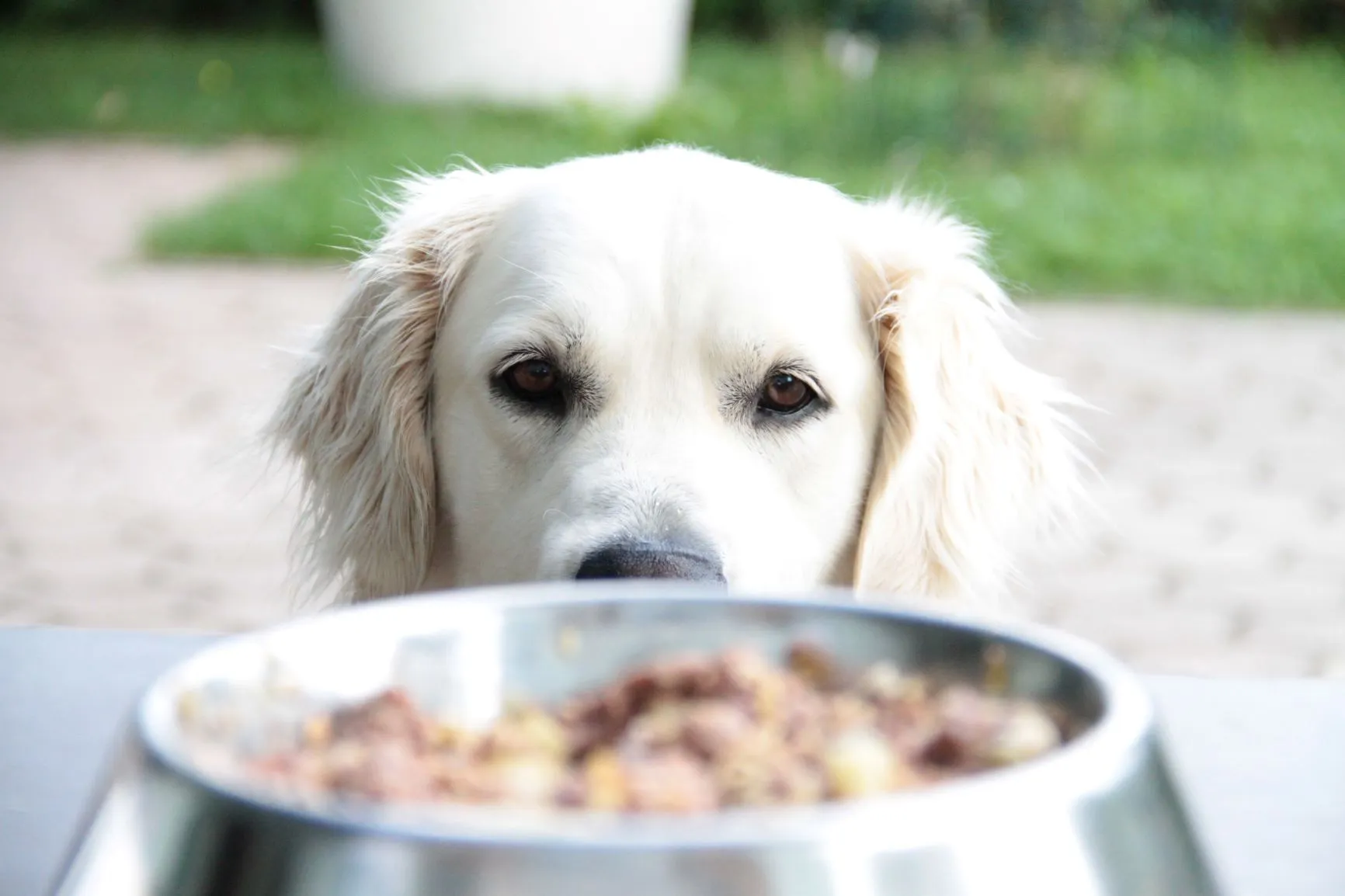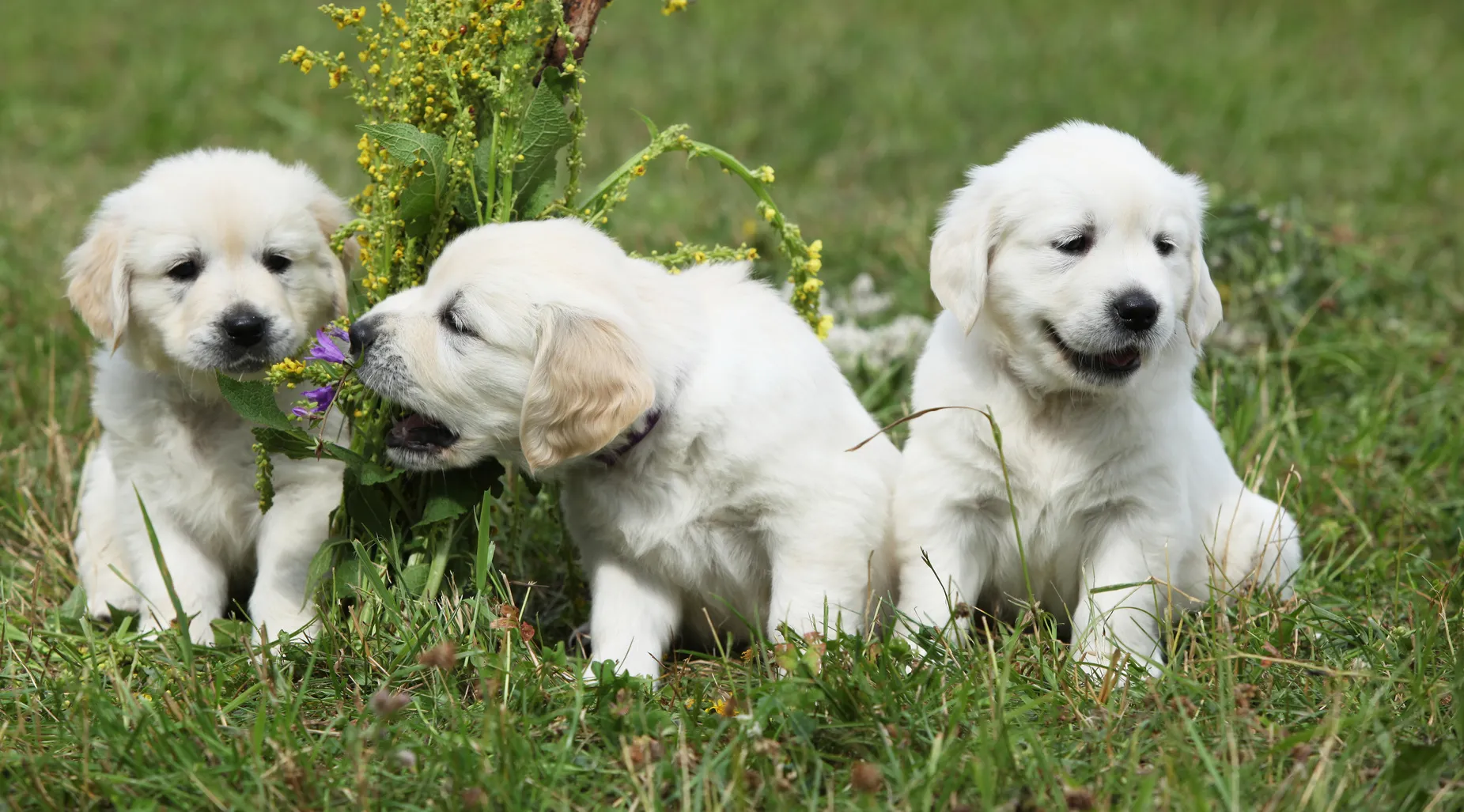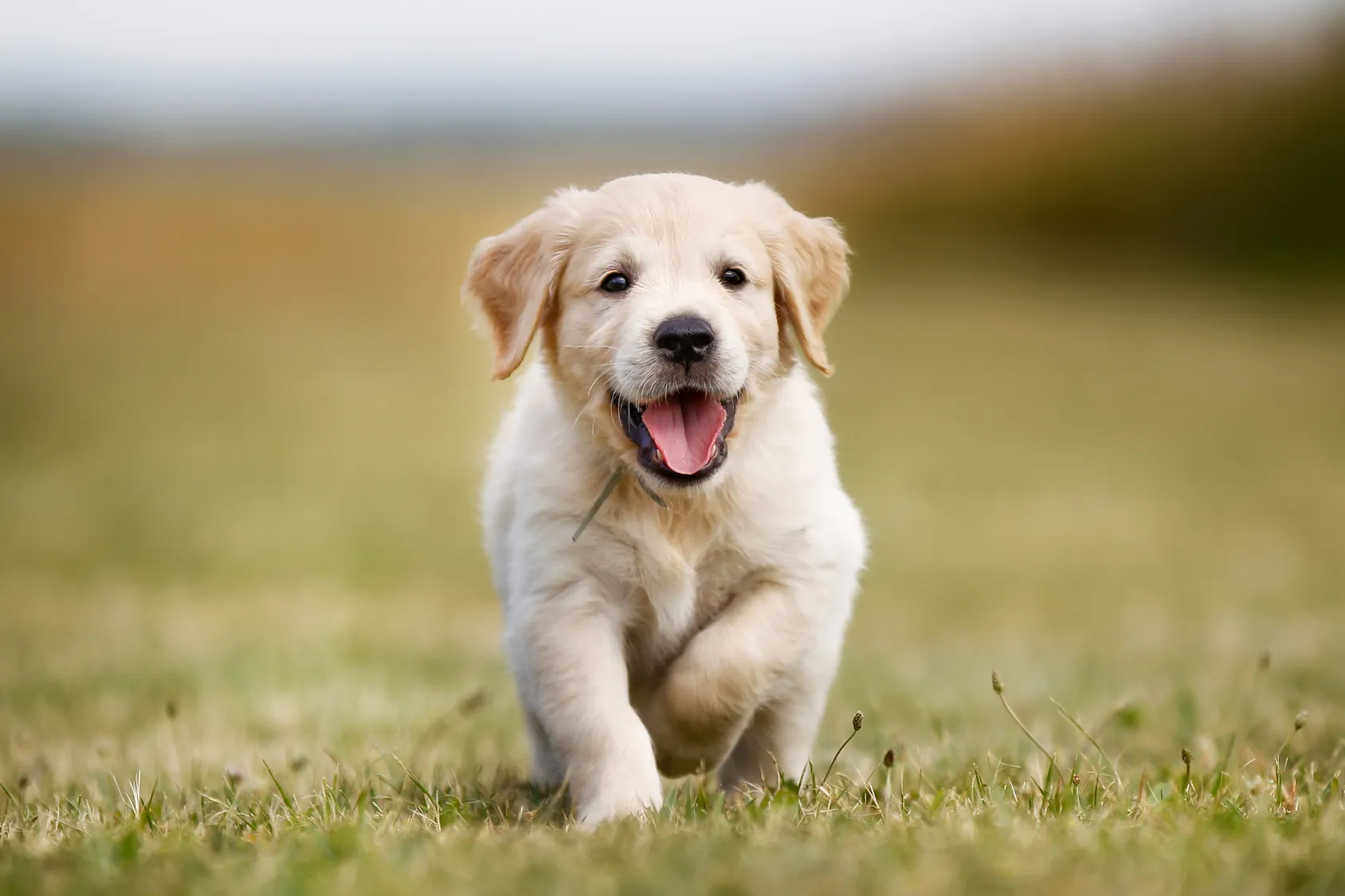Beagle
The Beagle's short legs can be deceiving – this medium-sized dog keeps you on your toes and is always full of surprises! This friendly breed is active, fearless and extremely clever.
The Golden Retriever is still one of the most popular dog breeds, especially with families. It is defined not just by its docility, but shows numerous other qualities too. Read in the following article everything you need to know about the Golden Retriever.

© MilsiArt / stock.adobe.com
The Golden Retriever's friendly nature is plain to see.
The Golden Retriever’s great popularity is certainly not just due to its loving nature, but its attractive appearance too. Golden Retrievers have a very harmonious and well-proportioned physique.
This breed’s skull with a pronounced brow and dark eyes give it the typical gentle, friendly expression. Strong muscles and bones make Golden Retrievers very agile and energetic dogs.
The Golden Retriever’s medium-length fur is smooth or wavy, but never curly. The fur lies close to the back, whereas the backs of the front legs, underside of the tail and chest and abdomen area are heavily feathered. Thanks to the thick undercoat, even extreme wet and cold weather conditions don’t affect the Retriever.
Colours range from a strong gold to a soft moon yellow and cream. White hairs may occasionally appear on the chest.
Golden Retrievers are medium-sized dogs. According to the breed standard, the shoulder height of males is between 56 and 61 centimetres. Females are somewhat smaller with a height of 51 to 56cm. Depending on the sex and size, these dogs weigh between 30 to 40kg.
Just as with other breeds, there are two different Golden Retriever breeding lines with their own objectives in terms of internal and external qualities.
The working (also field trial) is defined by its slender, athletic physique. Dogs from this line are particularly temperamental and have a strong hunting instinct. They are also highly willing to learn. Hence, this line is most similar to the original Golden Retriever breeding objective.
In contrast, the primary focus is physical appearance with the show line. The physique is more compact and the coat much lighter in color. Their fur is mostly significantly longer too and thicker compared to dogs from the working line.
The lines differ in terms of nature too. As the name ‘show’ suggests, Golden Retrievers from this line are calmer and more relaxed, although this doesn’t mean that they don’t enjoy exercise and plenty of sport. They tend to be more suitable for families than dogs from the working line.
The Golden Retriever is famous for its willingness to obey like hardly any other pedigree dog. It likes to please its owners and is characterised by a strong willingness to learn. It is very relaxed at adapting to day-to-day situations and loves taking part in all its owners’ activities.
Golden Retriever owners say jokingly that this breed would help an intruder to carry the valuables out of the house rather than frighten them away. In fact, its protective instinct is only rudimentally developed – if at all. Hence, they are definitely unsuitable watchdogs.
Instead, their eagerness to work and intelligence make them excellent guide and therapy dogs, as well as companion dogs for handicapped people. Combined with their good sense of smell and innate hunting instinct, these characteristics also lead them to be deployed as rescue dogs or narcotics or explosive detection dogs.
Eating is another great passion of Golden Retrievers. Compared to other breeds, Retrievers have an excessive appetite for pretty much everything they encounter. As a result, Golden Retrievers unfortunately tend to gain excess weight. Hence, you’re better off focusing on the right diet from the puppy phase and above all, adhering strictly to the portion specifications for food.
 © ray_ray / stock.adobe.com
© ray_ray / stock.adobe.com
You should pay special attention to your Golden Retriever’s wonderful coat. It doesn’t just lose hair during the moulting period, but moults more or less all year around. Hence, your dog’s fur needs brushing once to twice per week. This doesn’t just untangle the undercoat, but reduces the amount of hairs that you find on carpets, cushions and the couch.
In addition to the fur, your Golden Retriever’s eyes, ears, paws and teeth need checking up on regularly. You’re better off getting your dog used to such checks when it is still a puppy. On the one hand, you recognise possible changes in your dog quicker, and on the other hand it will be more relaxed about the procedure.
People-focused Retrievers are one of the most popular family dogs worldwide. Its cheerful and relaxed nature, as well as its trusting and playful character make is particularly popular with families with children. These friendly Goldies also prove highly tolerant when living with other pets.
Due to its size and love of exercise alone, the Golden Retriever is not suitable for being kept in a small apartment. It will ideally live in a house with a garden. Being kept in a kennel or staying alone for long periods isn’t an option for the sensitive Golden Retriever. Let it take part in your life and above all plan in enough time for physical and mental activities.
Like all hunting dogs, Golden Retrievers love exercise and therefore require intensive training. Undemanding daily walks are definitely insufficient. After all, these intelligent Retrievers don’t just want to be physically stimulated, but mentally too.
Along with little retrieval exercises and search games, several types of sport and training are also suitable for Golden Retrievers. Particularly popular options are obedience, agility, dummy training, tracking work such as man-trailing or being part of a rescue dog unit.
You will give these water-loving dogs real joy if you treat them to a swim in a river, lake or the sea. Golden Retrievers will swim away to their heart’s content. If there isn’t anything close by though, it will be content with puddles or water from the garden hose.
 © everydoghasastory / stock.adobe.com
© everydoghasastory / stock.adobe.com
The Golden Retriever experienced a real boom in the 1980s and 1990s. To this day, it is classed as one of the most popular breeds in English-speaking countries.
Unfortunately this boom has also had many negative side effects. Avaricious breeders focused on quantity over quality want to earn a quick buck with these sweet puppies. Thus, dogs are not planned and are paired without consideration for the nature and health of the animals. Some diseases typical of the breed emerge as a consequence of this, and some Retrievers still suffer from them to this day.
Through targeted breeding selection and strict admission requirements, attempts are being made to reduce the risk of such diseases. However, the following hereditary diseases are still more common than average in Golden Retrievers:
Nevertheless, healthy Golden Retrievers have a relatively high life expectancy of 12 to 16 years. If you have chosen a Goldie from a good breeder, you will have many years of joy ahead of you with your beloved pet.
 © zuzule / stock.adobe.com
© zuzule / stock.adobe.com
If you’re interested in a Golden Retriever puppy, definitely check whether the breeder has carried out all the required health checks. Get them to show you the family tree and determine there and then with your own eyes that the parent animals and siblings are in perfect health. Only buy your puppy from a recognised breeder and take time to make a careful selection.
The price for a healthy puppy from a reputable breeder is now around 2,000 euros upwards. However, a dog that will accompany you and your family for many years is absolutely worth the money. In addition, your little furball will generally already be microchipped, have undergone several dewormings and at least one cycle of vaccinations depending on its age.
It’s always worth asking in nearby animal shelters too. Sometimes there aren’t just elderly Golden Retrievers waiting there, but puppies looking for a nice new home.
 © Mikkel Bigandt / stock.adobe.com
© Mikkel Bigandt / stock.adobe.com
The origin of the different Retrievers is still shrouded in many myths and legends. However, unlike with most Retriever breeds, the history of the Golden Retriever can clearly be traced back to at least 1864.
During this year, the Brit Sir Dudley Marjoribanks (later named the Lord of Tweedmouth) purchased a yellow Wavy-Coated Retriever called Nous from a shoemaker in Brighton. The male was the only yellow puppy amongst its black siblings. Majoribanks started breeding dogs on his estate Guisachan in the north of Scotland.
The objective of these breeding efforts was to produce a perfect retrieval dog for hunting wild birds. Hence, he paired Nous with the female Tweed Water Spaniel Belle in 1868. Spaniels were not only considered very fond of water, but were also renowned as persistent retrievers.
Tweedmouth paired Nous and Belle’s offspring in the following 20 years with more Wavy-Coated Retrievers, Tweed Water Spaniels and red Irish Setters – even with a sand-coloured bloodhound in one line. The Golden Retriever as we know it today was the result of these pairings. In 1913, the breed was officially recognised by the British Kennel Club.
In accordance with the original breeding objective, Golden Retrievers were first deployed for post-shooting work. Its main task was retrieving shot game. It would bring the already dead animals to the hunter with a soft mouth.
By taking a Golden Retriever into your home, you will get a very people-focused and willing-to-learn companion. They want to be everywhere and are up for all kinds of fun. However, spending the whole day alone on the couch or in their basket isn’t for them.
By carefully choosing a suitable puppy, there will be many active years ahead for you and your Golden Retriever.
The Beagle's short legs can be deceiving – this medium-sized dog keeps you on your toes and is always full of surprises! This friendly breed is active, fearless and extremely clever.
The Golden Retriever is still one of the most popular dog breeds, especially with families. It is defined not just by its docility, but shows numerous other qualities too. Read in the following article everything you need to know about the Golden Retriever.
The German Shepherd is one of the most popular utility dog breeds in the world, though the willing-to-learn and people-focused nature of these versatile dogs also makes them suitable for family life.